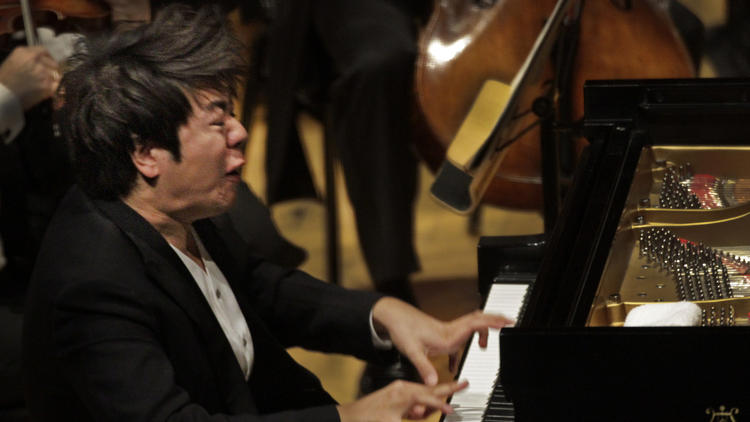Arpeggios 23, 26, 40, 41, 99, 103, 109, 131, 143, 152, 156, 173, 193, 200,
213, 215
Art of Finger Dexterity, The................................................................ 7
Articulation............................................................................... 27,
106
Bach, J.S.
Invention in A minor.............................................................. 13
Invention in C Major............................................................... 12
Invention in F Major............................................................... 31
Well Tempered Clavier Bk. I
Prelude in D Major............................................................. 62
Beethoven, L.
Op. 10, No. 1
Allegro..................................................................................... 101
Finale........................................................................................ 107
Op. 10, No. 3.............................................................................. 119
Rondo...................................................................................... 125
Op. 110
Morsel...................................................................................... 241
Op. 13............................................................................................ 111
Op. 13, Pt. 2................................................................................ 113
Practice Guide..................................................................... 118
Op. 14, No. 1.............................................................................. 131
Op. 2, No. 1
Prestissimo............................................................................ 103
Op. 2, No. 3................................................................................ 158
Trio.............................................................................................. 99
Op. 22..................................................................................... 25,
156
Allegro........................................................................................ 89
Op. 26............................................................................................ 150
Rondo...................................................................................... 162
Op. 27, No. 1.............................................................................. 165
Rondo...................................................................................... 140
Op. 27, No. 2.............................................................................. 173
Op. 31, No 1............................................................................... 146
Op. 53
Allegro..................................................................................... 181
Op. 53............................................................................................ 152
Op. 54............................................................................................ 135
Op. 57............................................................................................ 176
Andante................................................................................... 170
Morsel............................................................................ 234,
239
Op. 76 "Ruins of Athens"
Variation 1.............................................................................. 124
Variation 5.............................................................................. 123
Op. 81a
Wiedersehen........................................................................ 143
Op. 81a Allegro
Morsel...................................................................................... 242
Op. 90............................................................................................ 222
Variations "Venni amore" 1790
Variation 1................................................................................ 22
WoO 80 C Minor Variations
Variation 22........................................................................... 134
Variation 26........................................................................... 129
Variation 27........................................................................... 129
Variation 28........................................................................... 149
Variation 4................................................................................ 78
Variation 5.............................................................................. 102
Variation 6................................................................................ 85
Variation 7................................................................................ 43
Variation 8.............................................................................. 122
Variation 9.............................................................................. 161
Variations 1-3........................................................................ 109
Variations 14, 16.................................................................. 130
Brahms
Letter................................................................................................... 8
broken arpeggios.......................................................................... 155
Broken Octaves.................................................. 98,
119, 143, 158
Broken Sixths.................................................................................. 119
cantabile style.................................................................................... 18
Chopin, F.
Ballade in F Minor
Practice Guide..................................................................... 206
Ballade in F Minor, Op. 52................................................ 200
Ballade in G Minor
Practice Guide..................................................................... 228
Ballade in G Minor Coda................................................... 229
Practice guide...................................................................... 233
Ballade in G Minor Op. 23...................................... 213,
224
Berceuse Op. 57............................................................ 194,
221
Leaps......................................................................................... 167
Etude Op. 10, No. 12
Morsel............................................................................ 234,
236
Etude Op. 10, No. 4
Morsel...................................................................................... 235
Etude Op. 10, No. 8
Morsel...................................................................................... 238
Nocturne
Op. 27, No. 1........................................................................ 193
Nocturne Op. 27, No. 2
Morsel............................................................................ 237,
238
Prelude Op. 28, No. 3
Left Hand............................................................................... 139
Scherzo in C-Sharp Minor, Op. 39............................... 215
Sonata in B-Flat Minor
Alternate.................................................................................. 198
Sonata in B-Flat Minor, Op. 35........................................ 196
Chords...................................................................................... 200,
221
Clementi, Muzio................................................................................ 7
Complex Rhythm......................................................................... 108
Coordination 55, 58, 78, 85,
123, 124, 125, 150, 188, 189, 215
Coordination).................................................................................... 71
Counterpoint.................................................................................. 134
Invention in A Minor.............................................................. 13
Invention in C Major............................................................... 12
Invention in F.............................................................................. 31
Czerny, Carl.......................................................................................... 7
Davidsbündlertänze.................................................................... 169
Dotted Rhythm.............................................................................. 101
Double Notes. 111, 122, 129,
135, 168, 194, 200, 211, 242
Fingering................................................................ 71,
110, 193, 237
Forearm rotation.............................................................. 9,
39, 111
fortepiano............................................................................................ 18
four-against-three.......................................................................... 108
Gradus ad Parnassum........................................................................... 7
Group.................................................................................................... 10
Grouping....................................................................... 139,
236, 238
Hand Division................................................................................ 198
hands separately............................................................................... 11
Haydn, Joseph
Hob. XVI/23................................................................................ 81
Hob. XVI/27................................................................. 17,
18, 19
Variation 1................................................................................ 20
Hob. XVI/28................................................................................ 23
Variation 4................................................................................ 34
Hob. XVI/30................................................................................ 48
Variation 3................................................................................ 35
Variation 5................................................................................ 36
Hob. XVI/31................................................................................ 95
Hob. XVI/39......................................................................... 16,
42
Hob. XVI/8................................................................................... 15
Sonata 1785
Variation I................................................................................. 30
hinge.................................................................................................... 108
in 110
In/Out................................................................................................ 139
independence of fingers.............................................................. 8
inventions............................................................................................ 39
Leaps................................................................................... 79,
129, 167
Left Hand 21, 25, 41, 43, 54, 71, 76, 79, 98, 103, 122, 139, 140, 142,
149, 156, 170, 181, 189, 193, 196, 222
Lhevinne, Rosina............................................................................... 7
Liszt, F.
Concerto in E-Flat
Morsel...................................................................................... 243
Loesser, Arthur................................................................................... 8
Morsel..................................... 234,
235, 236, 237, 238, 239, 243
Moszkowski.......................................................................................... 8
Mozart, W.A.
K. 208
Variation 1................................................................................ 53
K. 265
Variation 7................................................................................ 75
K. 265 "Ah, vous dirai-je"
Variation 1................................................................................ 33
Variation 2................................................................................ 54
Variation 3................................................................................ 27
Variation 4................................................................................ 41
Variation 6................................................................................ 21
K. 279................................................................................................ 37
K. 280................................................................................................ 44
K. 309................................................................................................ 58
K. 310........................................................................................ 73,
76
Allegro maestoso.................................................................. 71
Presto.......................................................................................... 79
K. 331........................................................................................ 55,
56
K. 332................................................................................................ 65
K. 333................................................................................................ 86
K. 455 "Unser dummer Poebel"
Variation 1................................................................................ 28
Variation 2................................................................................ 98
K. 500
Variation 1.............................................................................. 106
Variation 2.............................................................................. 142
Variation 3................................................................................ 24
K. 545................................................................................. 26,
29, 40
Octaves... 43, 55, 56, 102, 119, 130, 134, 135, 140, 143, 158
out……………………………………………...110
Paganini................................................................................................... 7
Parallel............................................................................. 125,
146, 165
Practice Guide....... 18, 39,
64, 118, 188, 206, 210, 228, 233
Practicing............................................................................................. 10
Repeated Notes............................................................ 86,
109, 110
rotate.................................................................................................... 118
Rotation................................................................................................... 9
Scales 19,
29, 31, 35, 42, 44, 58, 65, 73, 75, 81, 86, 95, 107, 143, 146
School of Velocity, The........................................................................... 7
Schumann, R.
Critic.................................................................................................... 8
Fantasy Op. 17........................................................................... 211
Kreisleriana Practice Guide.............................................. 210
Kreisleriana, Op. 16, Agitatissimo.................................. 208
Op. 6, No. 6................................................................................ 168
Shape............................................................................................ 10,
188
Staccato.................................................................................................. 85
strength training................................................................................. 8
Thirds.................................................................... 129,
130, 200, 242
Thumb on Black Keys................................................................. 56
tremolo............................................................................................... 108
Trills..................................................... 27,
106, 142, 150, 161, 181
Triplets................................................................................... 16,
17, 58
Two Against Three...................................................................... 142
Two-Note Slurs.............................................................. 30,
53, 106
Voicing........................................................................... 167,
170, 221
walking arm........................................................................................ 10
weight.................................................................................................. 172
working-in................................................................................................. 8















+Var+1.png)









